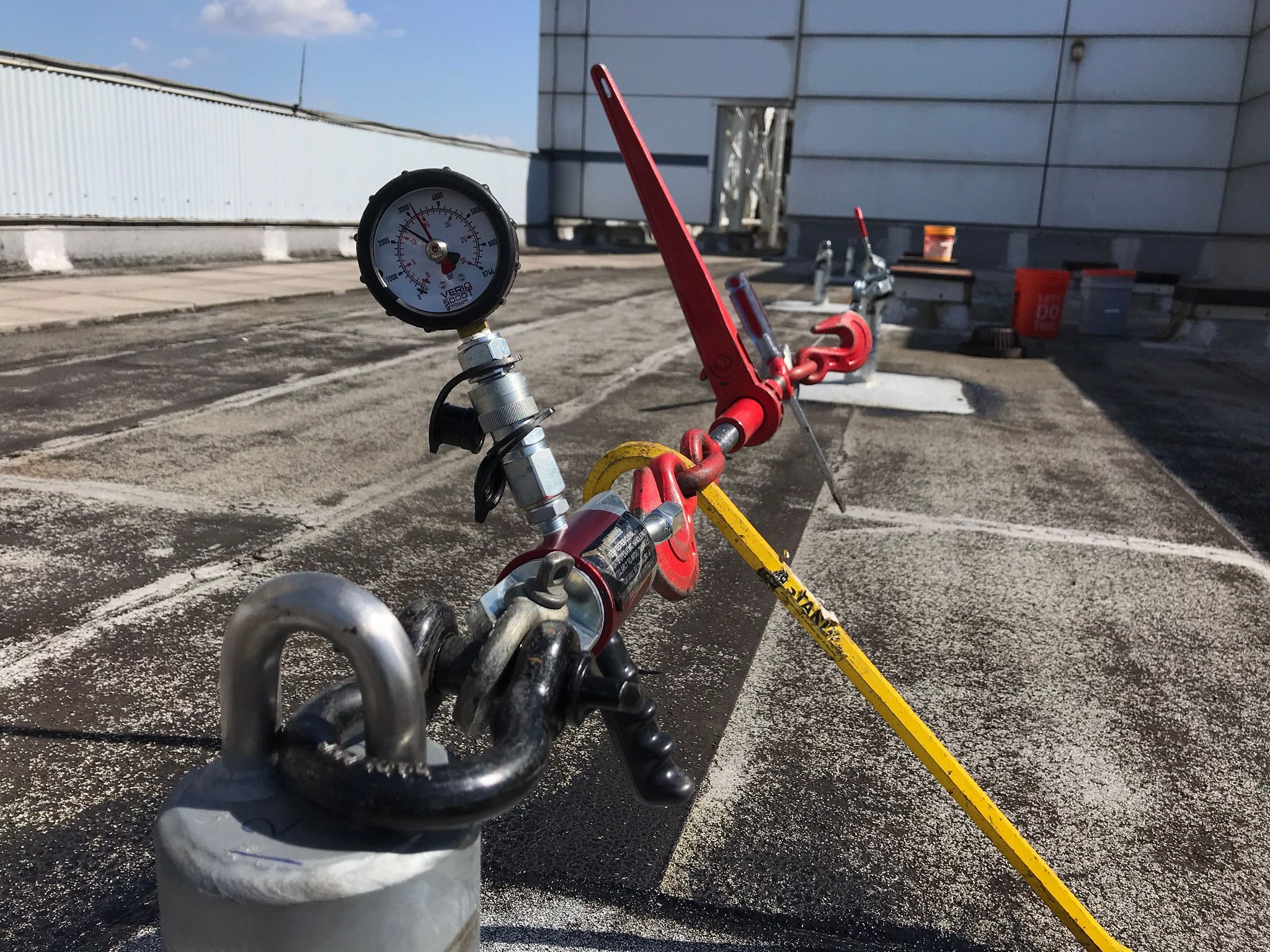-
ANCHORAGE– what many used to call an anchor, OSHA now clarifies an anchorage as a secure point of attachment for equipment such as lifelines, lanyards, deceleration devices, or rope descent systems. It may be an installed item, or a fixed structural member such as a beam, column or girder, or a floor or wall, that is an integral part of a structure. Any anchorage must be capable of safely supporting the impact forces applied to it during a fall, by the fall protection system being used.
-
CAGE – means an enclosure mounted on the side rails of a fixed ladder or fastened to a structure located behind the fixed ladder, that surrounds the climbing space of the ladder. Note that the final ruling eventually phases out new ladder cage installations.
-
DESIGNATED AREA – a distinct portion of a walking-working surface delineated by a warning line within which, work may be performed without additional fall protection.
WARNING LINE – a barrier erected to warn workers they are approaching the boundary of an unprotected side or edge. It delineates an area in which work may take place WITHOUT USING other means of fall protection, such as guardrail, a safety net, or personal fall protection system. Workers may enter the demarcated area ONLY IF the employer provides them with the required fall hazard training (1910.30) and assigns work to be performed in that area.
-
FALL HAZARD – any condition on a walking-working surface that exposes a worker to a “risk of harm” from a fall on the same level, or to a lower level.
-
FALL PROTECTION – any equipment, device or system, that prevents a worker from falling from an elevation, or that mitigates the effect of such a fall.“Mitigates the effect” means that the fall protection prevents the worker from coming in contact with a lower level, if a fall occurs. Fall protection includes guardrail systems, safety net systems, ladder safety systems, personal fall arrest systems, or similar fall arrest systems.
-
FIXED LADDER – having rails or individual rungs that are permanently attached to a structure, building or equipment. OSHA notes that ladders designed into, or are an integral part of machines or equipment are EXCLUDED from coverage- 1910.23(a)(2).
-
FLOOR OPENING – an opening measuring 12-inches or more in its least direction, in any floor, platform, pavement, or yard, through which a person may fall.
-
INFREQUENT and TEMPORARY:
-
“INFREQUENT” jobs do not include those that workers perform as a primary or routine part of their job, or repeatedly at various locations during a work shift. A task may be considered infrequent when it is performed once a month, once a year, or when needed.
-
Examples of“infrequent” include- annual equipment maintenance, replacing filters/batteries monthly or quarterly, or responding to occasional equipment breakdowns.
-
Be aware, that any service or maintenance performed more than once per month is considered regular or routine and IS NOT considered “infrequent”.
-
The term “TEMPORARY”” refers to the duration of the task. OSHA states that temporary tasks are those which1) can be completed in 1-2 hours, 2) don’t span into the 2nd day, and 3) don’t involve multiple trips to the roof. Examples here include changing a filter in a rooftop HVAC system, resealing the flashing around a hatch or skylight, or replacing a part on a security camera.
-
- LADDER SAFETY SYSTEM– a system designed to eliminate or reduce the possibility of falling from a ladder. It usually consists of a carrier, a safety sleeve (which is a moving component that travels on the carrier), a lanyard, connectors and a body harness. The new definition also specifies that cages and wells, are no longer considered ladder safety systems, and phases out their use.
-
LOW SLOPE ROOF is a new term that OSHA added to the final rule – defined as a roof with a slope less than, or equal to, a ratio of 4 in 12. This means a vertical rise of 4 units (e.g., inches, feet, or meters) to every 12 units of horizontal run.
-
PLATFORM – means a walking-working surface elevated above the surrounding area. It could be used for operating or servicing equipment.
-
PERSONAL FALL ARREST SYSTEM – used to arrest a worker’s fall from a walking-working surface, if one occurs. This system consists of a body harness, anchorage, connector, and a means to connect the harness to the anchorage, such as a lanyard, deceleration device, lifeline or a suitable combination of these items.
-
TRAVEL RESTRAINT SYSTEM – is a combination of an anchorage, connector, lanyard, and body support that an employer uses to eliminate the possibility of a worker going over the edge of a walking-working surface.
-
WALKING-WORKING SURFACE – a horizontal or vertical surface on or through which workers walk, work, or gain access to work areas or workplace locations. This includes floors, stairways, roofs, fixed and portable ladders, runways, ramps, walkways, aisles, platforms, and other surfaces.
Important things to know, review more articles OSHAs
OSHA’s – 1910.22 General Requirements
OSHA Recognized 3-Levels of Skill- Work at Height
Important Definitions per OSHA
OSHA’s – 1910.140 Personal Fall Protection Systems
OSHA’s – 1910.29 Fall Protection Systems & Falling Object Protection- Criteria and Practices
OSHA’s – 1910.28 Duty to have Fall Protection & Protection from Falling Objects
OSHA’s – 1910.30 Training Requirements
OSHA’s – 1910.23 Ladders- Fixed and Portable


